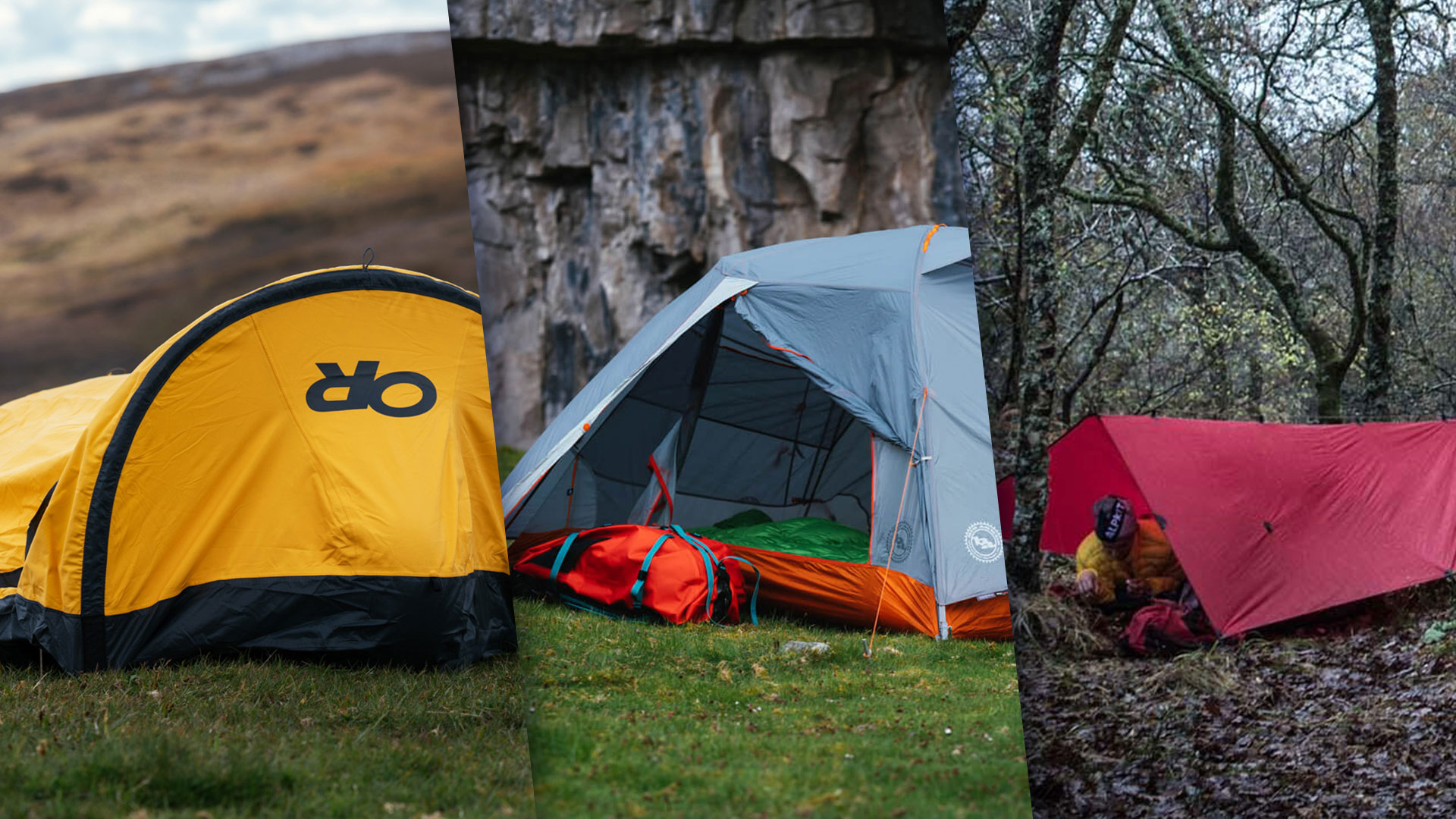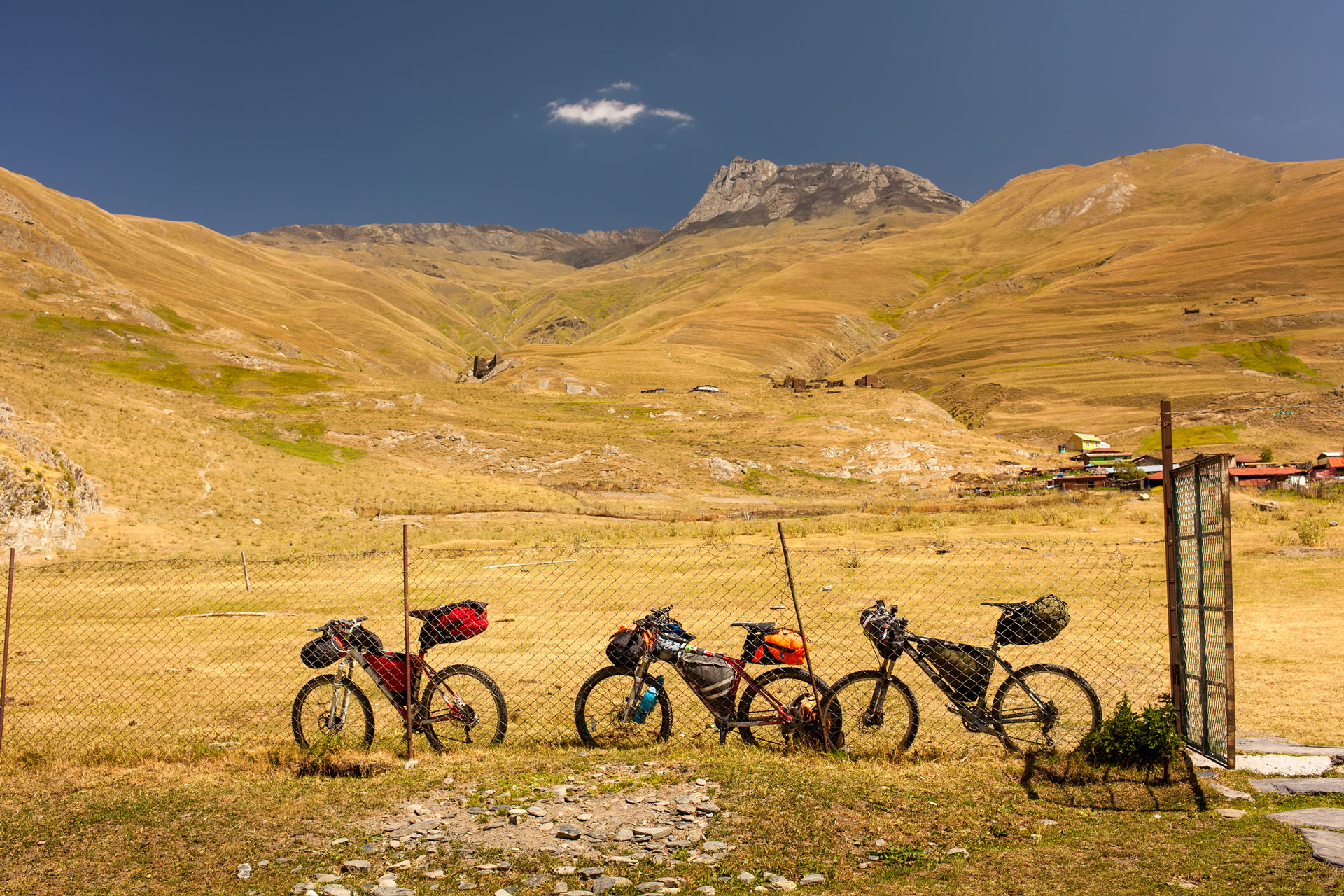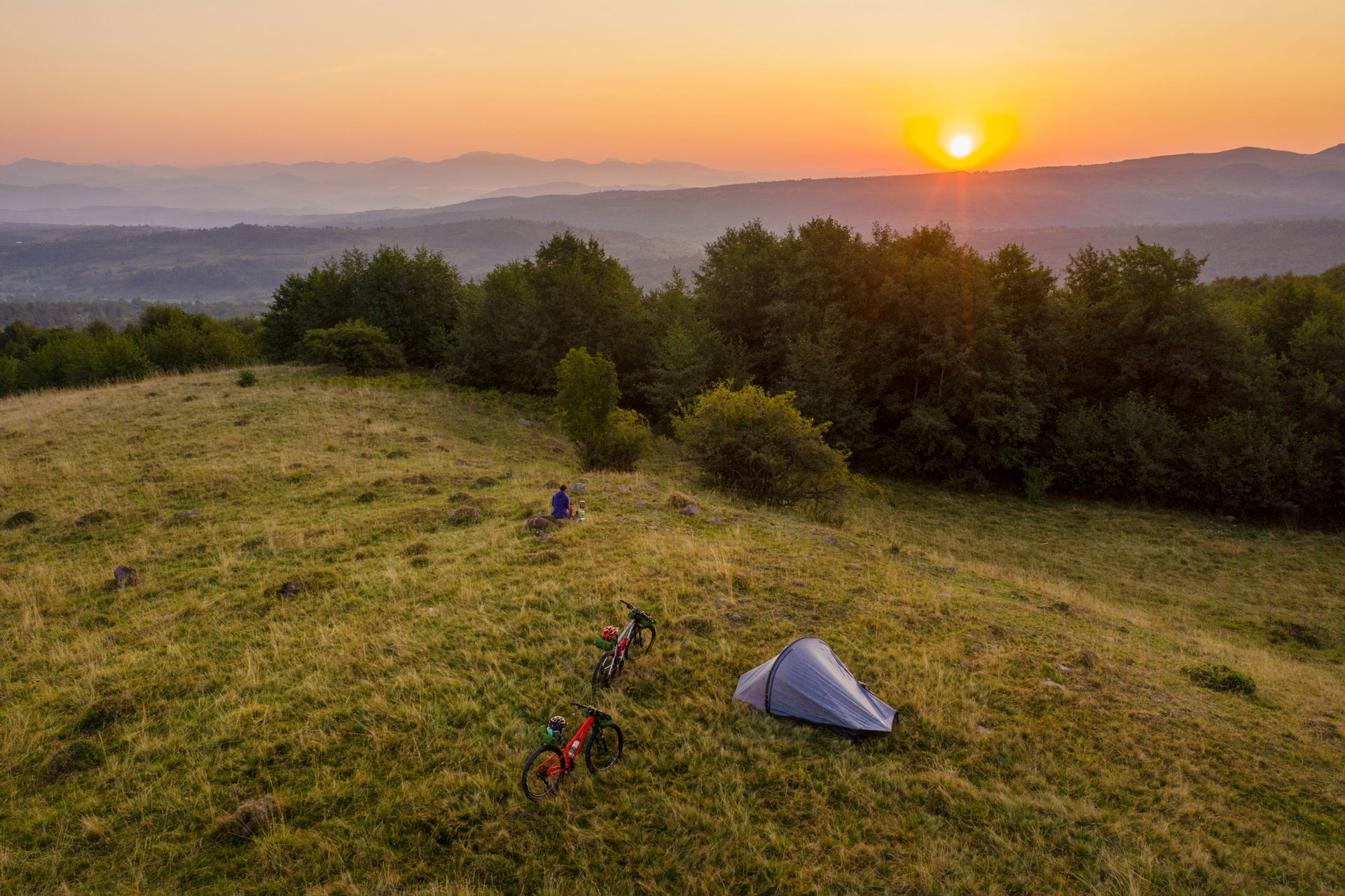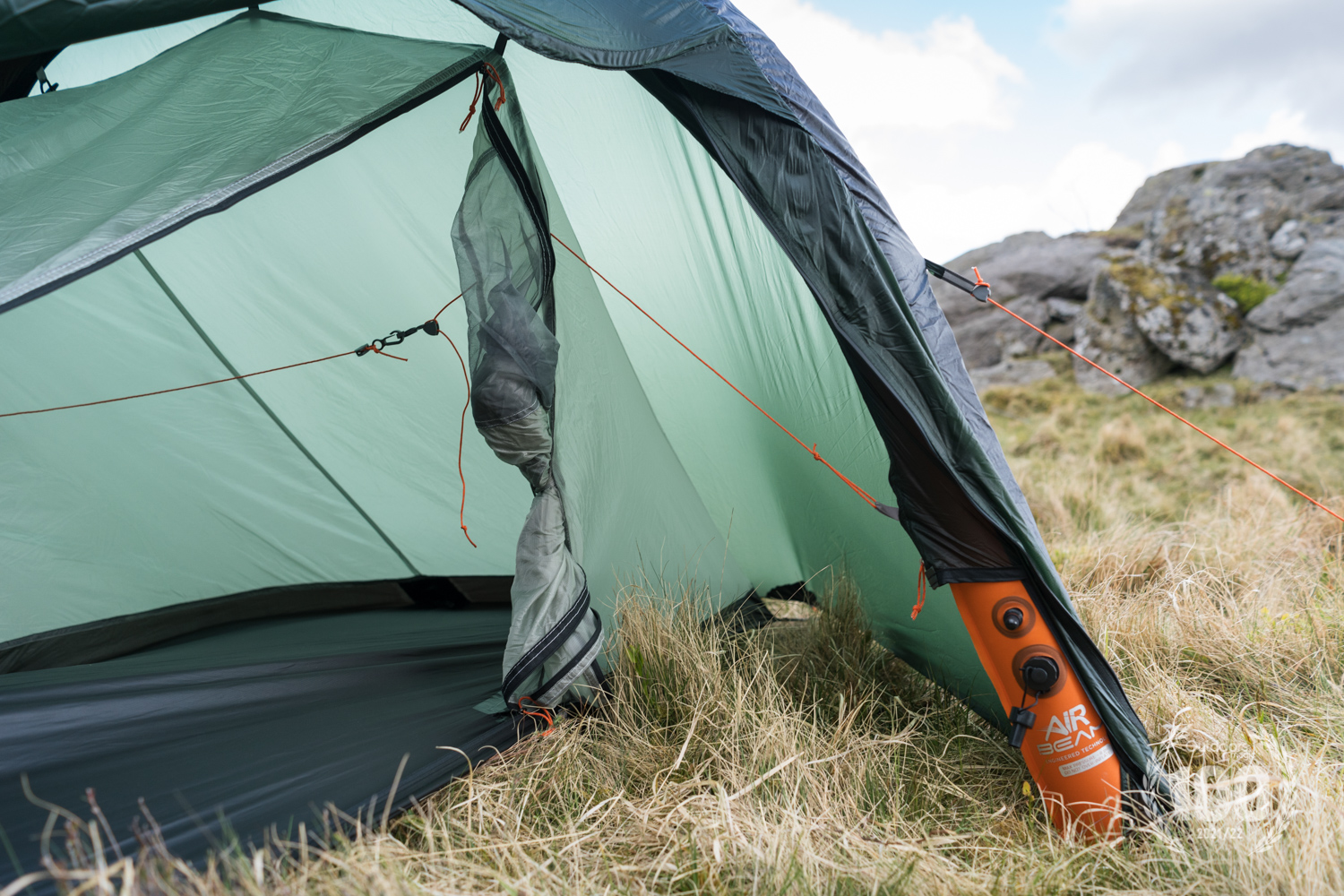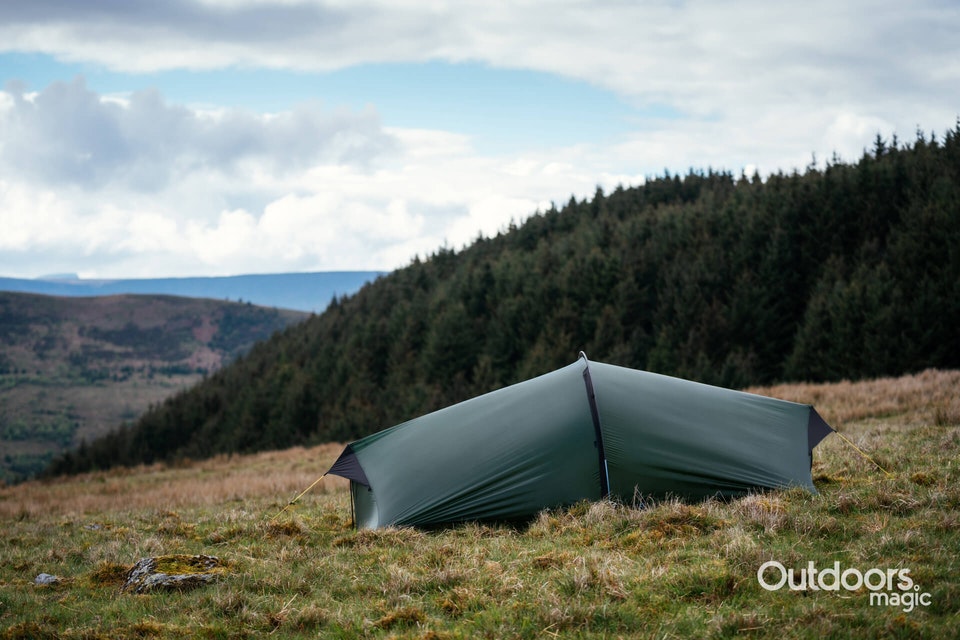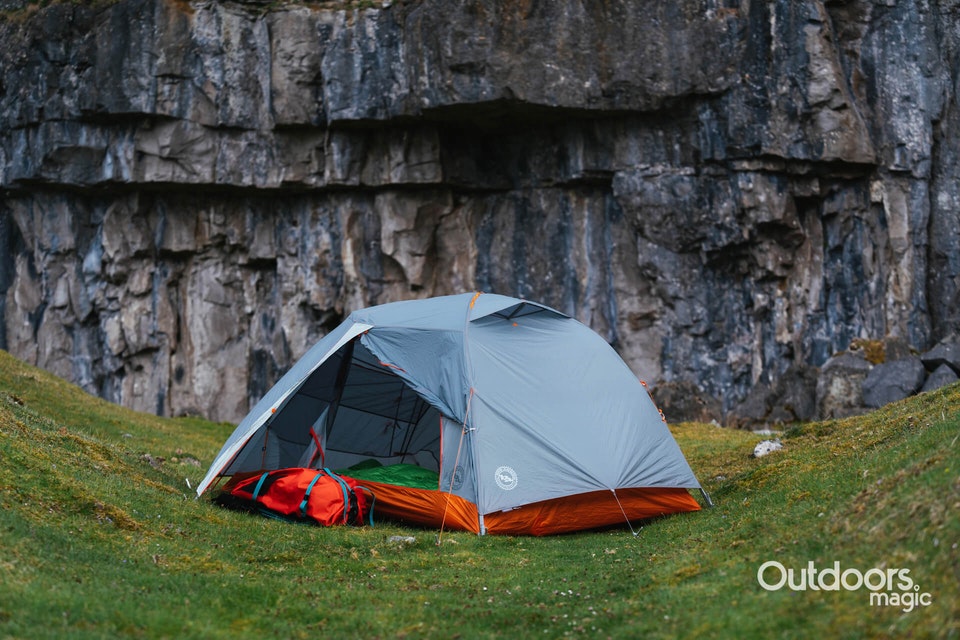MSR Hubba Hubba NX

Price: £444.99
Weight: 1.56kg
In reality, the demands of a bikepacker are very similar to the fast and light hiker. MSR’s superbly-named Hubba Hubba may be described as a backpacking tent but it’s also suited to bikepacking. it has a claimed weight of 1.56kg and a pack size of 46cm x 15cm.
The tent’s generously-sized interior provides plenty of head room and can also be entered from either side, in turn providing two porches for storing bikepacking bags.
Related: Best Bikepacking Bags
The freestanding design is ideal for bikepackers who need flexibility as to where they can camp. The Hubba Hubba can also be pitched with just the poles, flysheet and a footprint or tarp (sold separately) if you want to cut weight.
The Hubba Hubba isn’t quite as compact as the Terra Nova and Big Agnes tents featured here. You should make sure it fits in your handlebar bag. However, this is still a really good option. If you want to go lighter and smaller still, check out the one-person Hubba.
Read our full MSR Hubba Hubba NX review.
Alpkit Ordos 2

Price: £169.99
Weight: 1.3kg
Alpkit is a favourite among bikepackers. The British firm sells a range of quality bikepacking bags as well as camping gear and clothing.
The Ordos 2 is Alpkit’s lightest tent (claimed weight 1.3kg). While the pack size is a little bigger than the Terra Nova and Big Agnes tents (at 42x13cm), it’s still well-suited to bikepacking adventures.
The inner and flysheet are pitched separately (inner first). We generally prefer tents that pitch inner and outer together, both for simplicity and when pitching in the rain, but the Ordos’ design does mean you can just use the inner on warm, dry evenings.
The outer can be pitched on its own, too, for a super-lightweight setup which still offers a reasonable level of protection. Otherwise, the Ordos 2 is also available with a footprint for a tenner more; a worthwhile investment.
Vaude Lizard GUL 1P

Price: £540
Weight: 0.69kg
This one is for the real weight weenies – the Vaude Lizard GUL 1P weighs just 690g. That, frankly, is ludicrously light. It makes the Vaude suited to riders who want the protection of a tent without the additional weight. The Lizard GUL 1P’s low weight will cost you, though.
Carbon fibre poles help keep the weight down. Despite the compact size and featherweight design, the tent is fully waterproof and rated for three-season use. A small porch offers storage space for kit but, as ever with a tent like this, the Vaude Lizard GUL 1P is not particularly spacious.
Where the Vaude Lizard GUL 1P also excels is in its inconspicuousness. If you want the protection of a tent and the ability to squeeze into the stealthiest camping spots, the Lizard ticks both boxes. For all-out comfort, however, we’d pick one of the roomier options featured here.
Words: George Scott
You May Also Like
The 10 Best Bikepacking Routes In The UK
Bikepacking King Alfred’s Way
Best Three-Season Sleeping Bags
